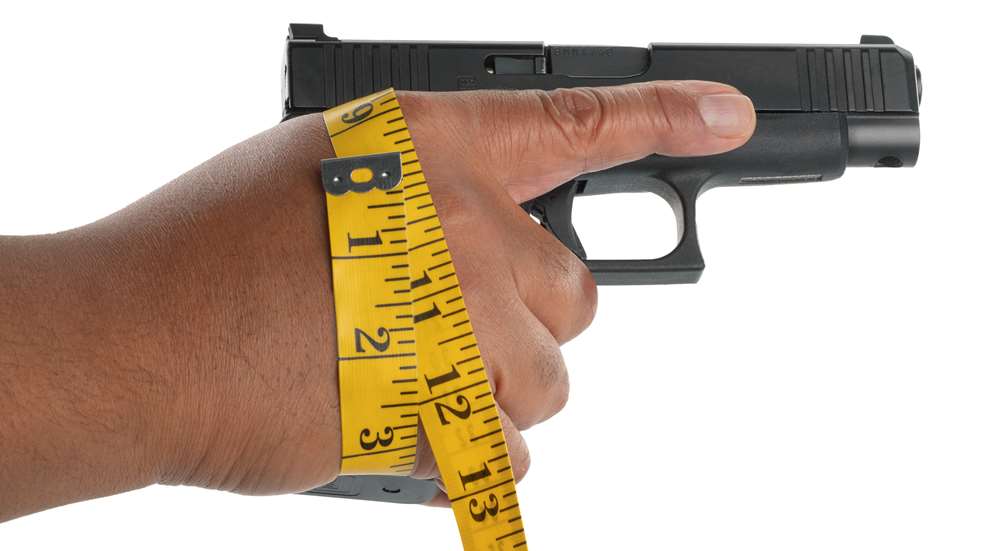
Making sure the gun fits the shooter as well as possible greatly enhances the likelihood of he or she hitting the target once rounds go downrange.
The Problem
You have decided to get serious about your personal-defense training in light of the continued social unrest in your locale. The dilemma you face is whether to focus your efforts on marksmanship training or to spend the most of your time and money learning the finer points of putting the gun into operation and keeping it in operation until it is time for maintenance and storage. There seems to be as much to learn about the handling of the gun as there is to learn about marksmanship. Both are important in your opinion, but which, initially, needs the bulk of your focus?
The Solution
This is much like the age-old question of which came first, the chicken or the egg?
For most people, the objective of shooting is to hit what they are attempting to hit, so marksmanship would be seem to be the logical answer. However, there needs to be a foundation of skills already present to be able to hit a target.
Gun handling covers a broad scope of techniques and skills required to put the gun into operation.
Starting at the beginning, understanding the nomenclature of the gun that is to be used before it is even touched is necessary for safe handling. Knowing where the muzzle is and where to point it when the gun is being handled is essential to the safety of yourself and those around you. Later on, when marksmanship is considered, hitting the target is important. The trigger falls into a similar category as to when it should and should not be touched for safety and success.
Gun handling includes learning the names and function of all the levers and buttons on the gun and being able to successfully operate each one. Opening the action of a revolver or a pistol is essential to verifying the gun is clear, empty and safe. How to load a magazine and then insert it in the pistol—or load the cylinder of a revolver—prior to shooting is part of the progression of gun handling. Once the gun is loaded, the task then comes of how to safely unload it, whether the gun was fired or not. This should be followed by rendering the firearm clear, empty and safe through a visual as well as physical inspection.
Prior to firing, gun fit to the individual should be given consideration, increasing the likelihood of student success in handling and marksmanship, which will follow once good handling habits have been established. Without going into too much detail, gun fit allows the shooter to comfortably hold the gun with one hand, point the gun in the direction of a target as if they were pointing their index finger at the target, and reach the face of the trigger with the index finger while pointing the gun. This will help in determining the size and weight of the gun best suited for the shooter, whether the gun will be used with one hand or both hands together. However, there’s another factor to consider.
Hand strength has more of an effect on gun handling than many realize. Once the size and weight of the gun are determined for starters, being able to pull the trigger without changing the shooter’s original grip on the gun is essential for acceptable marksmanship. In semi-automatic pistols, locking the slide rearward, inserting and releasing magazines as well as manipulating any external safeties are non-negotiable requirements for handling before going to the range to focus on marksmanship.
In addition to the aforementioned, the caliber of the gun to be handled and fired should be considered with respect to its size and weight. This corresponds directly to the recoil generated upon firing and the hand strength necessary to comfortably control the gun.
Once the basic essentials of handling are embedded in the shooter’s skillset without ammunition, then it is time to refocus one’s efforts on developing good habits in marksmanship. Stabilizing the muzzle on the target and learning to operate the trigger without affecting the muzzle’s stability is what is needed to provide success in hitting the target.
With success in being able to hit targets consistently, handling can again be the focus to skill improvement in personal defense. Learning to perform multiple methods of loading and unloading, multiple methods of stoppage clearance, one-hand and support-hand firing techniques are all facets of gun handling that increase proficiency and confidence in operation from a defensive posture.
Beyond that, handling could include shooting while moving, improvised positions, using flashlights and lasers and venturing into reality-based training scenarios.
Marksmanship is important, but without gun-handling skills, your endeavors in the area of personal defense will be left lacking. The emphasis that you put on either is determined by the manner and speed of your progression.





































